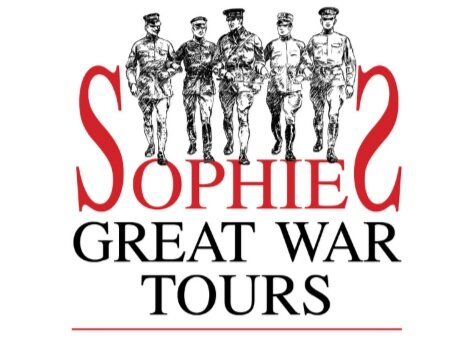Today’s post is a personal one for Sophie and team member Steve.
Day 15 follows the story of Edward Rust.
Edward was born in 1896 and was the eldest son of the Reverend Edward and Sarah Rust.
He joined the 4th Battalion Yorkshire Regiment in March 1914, whilst he was still a student at Scorton Grammar School. When war was declared he volunteered for foreign service, landing in France with the rest of the battalion on 18 April 1915. The battalion were serving with 150th Brigade, 50th (Northumbrian) Division.
On 22nd April 1915, the Germans launched the 2nd Battle of Ypres, using poison gas in mass for the first time on the Western Front. Edward’s battalion was called forward with the rest of their brigade to support the Canadians, who were needed to close a gap in the line caused by this release of gas, which was overwhelming the French Colonial troops stationed on the outskirts of Ypres. This gap needed closing otherwise the Germans could have broken through to the strategically important town of Ypres in Belgium.
One witness of the advance to assist the Canadians noted,
When we got to Ypres, we found a lot of Canadians lying there dead from gas the day before, poor devils, and it was quite a horrible sight for us young men.
On 24th April 1915, the 4th Battalion were ordered to advance towards St Julien, situated to the north east of Ypres, to support the 3rd and 14th Battalions of the Canadian Expeditionary Force. Unbeknown to them, the Germans had captured St Julien and were now moving southwards.
The battalion had advanced a mile when they came up against artillery and machine gun fire forcing them to hold a line that came level with the village of Fortuin where they held some dead ground between a sunken road and the Hanebeek Stream. Here they counter attacked with two Companies who advanced in rushes forcing the Germans to fall back on St Julien.
The 4th Battalion’s war diary noted,
We started off, both flanks in the air, with little artillery support proceeding under fire to Fortuin. We could find no one in superior command. We heard fighting going on towards St Julien and saw a few men retiring. We therefore changed front left and joined in under heavy rifle and machine gun fire we took up position about 700 yards south of St Julien and endeavoured to get orders and information so things looked pretty bad and there seemed a fair chance of both the 4th E. Yorks and ourselves being cut off and unable to extricate ourselves.
In this attack the battalion lost their C.O. and Adjutant along with 3 other officers and 69 other ranks killed or wounded but the battalion held the line after reinforcements came up to support them.
In this fighting Edward was twice wounded and he and was taken to a field hospital, but returned to the firing line the following evening, where he remained with the battalion until it was relieved on the 29th April. Sadly, it was reported that Edward died from his wounds just as he left the trenches.
Edward’s company commander, Captain Maughan wrote,
The youngest man in my company, he shared in all the arduous duties and marches, and I never knew him utter a complaint.
Edward was aged 19 when he died and is now buried in Hazebrouck Communal Cemetery and he is one of only a few casualties who now has a very rare inscription on his headstone which states,
SERIOUSLY WOUNDED WHILE ADVANCING WITH HIS REGIMENT IN THE FIGHTING NEAR ST. JULIEN SAT. APRIL 24. 1915 HE WAS TAKEN TO THE FIELD HOSPITAL BUT WAS SO EAGER TO UPHOLD THE HONOUR OF HIS REGIMENT AND TO SERVE HIS COUNTRY THAT HE RETURNED NEXT DAY TO THE FIRING LINE AND REMAINED WITH HIS COMRADES UNTIL THEY WERE RELIEVED AND DIED ON APRIL 30TH COURAGEOUS TO THE END AND BELOVED BY ALL WHO KNEW HIM
A tablet was also erected to his memory by the scholars of the Scorton Grammar School, and this was unveiled by the Reverend W. Kerr Smith, Governor of the School, on 29 July, 1915, and a stained-glass window was placed to his memory in Hamsteels Parish Church where is father was the Rector.
Steve and I had the pleasure of accompanying two members of Edward’s family on a pilgrimage to follow in his footsteps. We got to the ‘dead ground’ noted in the war diaries and could look out across at where his battalion gallantly held the line. We then visited his grave and spent some time paying our respects. These are the incredibly moving moments that we guides work hard for. We are always honoured to be trusted with the stories of these young men by their family members. We are furthered honoured that Bill and Sheila, Edward’s family, have put their trust in SGWT three times now, following three exceptionally brave men across two world wars.
Edward Rust was a young man with a good future ahead of him, but he felt the need to serve his country. Despite his young years, he did not wish to leave his comrades in the lurch despite two serious wounds. He insisted on getting back to the line so that he could continue to serve when what he really needed was extended medical care. That decision, to put others ahead of his own needs, claimed his life.




